Are you looking to understand the basics of how to plan a novel?
This is the typical first step in the novel-writing process.
Even though starting with a structured plan is recommended, not all writers plan their novels. For example, Ann Patchett doesn’t plan at all.
On the other hand, some writers, like J. K. Rowling, for instance, like to plan to keep things organized. Rowling says she uses many tools and varied techniques to plan her novels. The same is the case with Sophie Hannah, who is a big fan of planning her books.
The best thing about planning is not forgetting anything important about your story or characters. Additionally, when you plan your novel, it saves time, and resources, and simplifies the writing process. You can finish your novel quickly as you know everything about it in advance.
There isn’t a single best way to plan a novel. And there isn’t a one-size-fits-all all. You can plan your novel in several ways based on your preferences and likes. There is no set planning pattern that every writer must follow. This gives you a lot of space and flexibility.
How to Plan a Novel in 11 Steps
Here’s a complete guide to planning your novel. If you’re a fiction writer, first-time novelist, or any kind of novel writer struggling to organize your ideas, these steps will help you get started.
Step #1: Write a One-Sentence Summary
The first step in novel planning is to write its summary in a single sentence. This is known as a one-sentence summary, hook, logline, or pitch. You don’t have to mention characters or any other specific details rather write a single line to describe your novel’s idea.
Here is a one-sentence summary of To Kill a Mockingbird:
“An attorney who hopelessly strives to prove the innocence of a black man unjustly accused of rape and a mysterious neighbor who saves her and her brother from being killed.”
Here is another example from Harry Potter and the Sorcerer’s Stone:
“A boy wizard begins training and must battle for his life with the Dark Lord who murdered his parents.”
You might not have such specific details about the novel you are planning at this stage. You can write any details you have. You can throw in your idea and refine it later. Whatever your novel is, write its summary so that you know what you are writing about.
Step #2: Define Genre
Ask yourself what type of novel you’ll write. After writing the one-sentence summary you should have an idea of the novel genre such as non-fiction, romance, adventure, etc.
Defining the genre of the novel early in the planning stage helps you focus on the genre and it helps you select the right template (if you are using a novel writing software).
If you don’t what type of novel you’ll write, it will get difficult to plan and write it. You need to identify a genre based on your interest, story, plot, publisher expectations, reader expectations, etc.
Defining your novel genre helps you set the tone and voice of your novel. For example, if you are writing a romance novel, you’ll know your target audience, what language to use, what voice to use in the novel, and what your target readers expect.
It helps you meet (or even exceed) the expectations of your readers.
If you know what genre your novel will be, you are good to go. If not, you must rethink and revisit your plot and pitch – and choose a genre at this stage. Not doing so will create problems when you start writing the novel or at the publishing stage.
If you want to streamline the novel creation process, you can also generate a custom book template with AI:

Step #3: Come up with a Story Description (Blurb)
A blurb is a short description of your story in a few paragraphs. It is used for promotional purposes and it includes a strong hook to make it appealing for the readers.
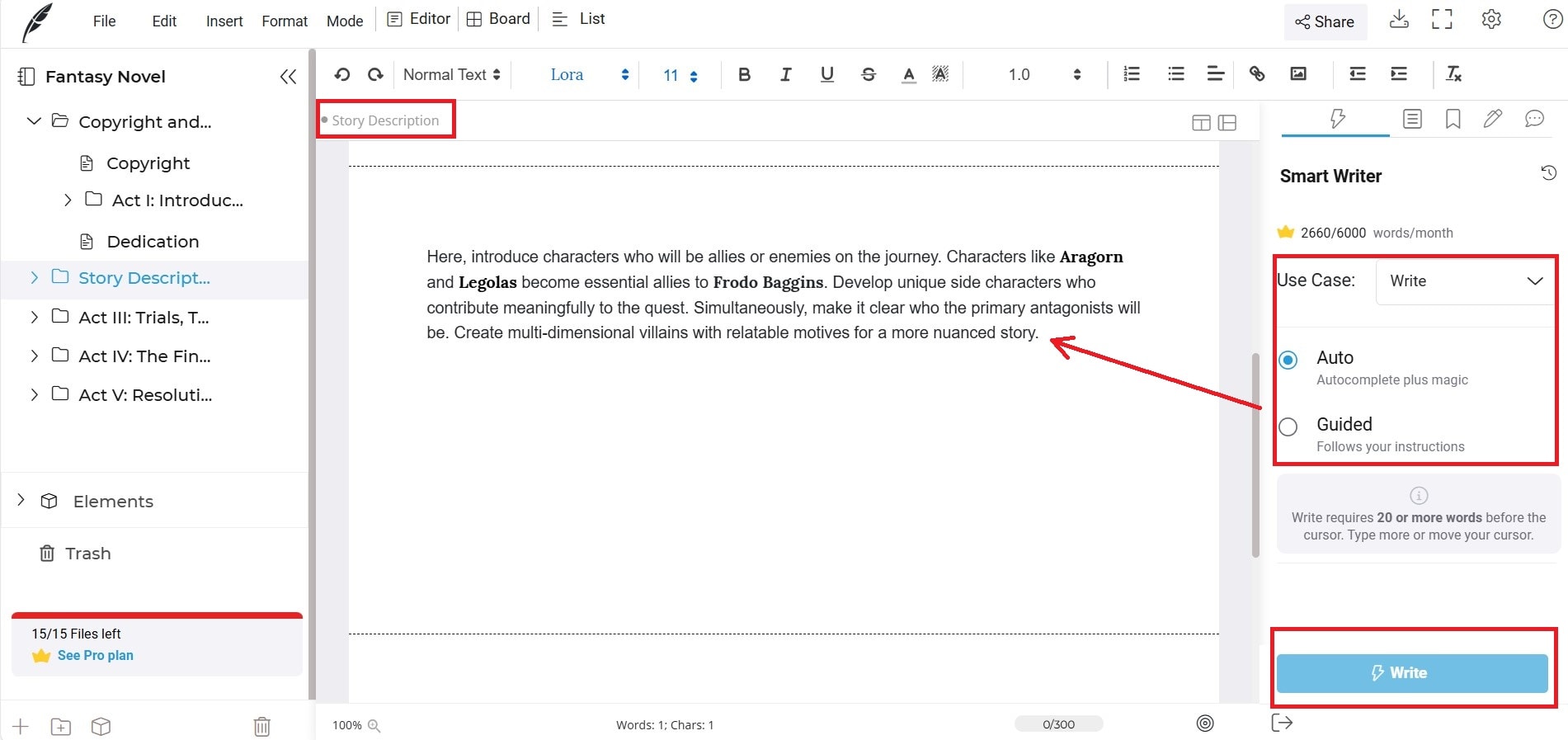
Think of how you’ll tell about your novel to a friend or how you’ll explain your novel idea to someone else. That’s all you have to do.
Don’t overthink. The blurb is tentative and will be edited several times throughout the creative writing process so don’t hesitate, you can always tweak it.
Here is an example of a blurb with a strong opening and impeccable word selection:
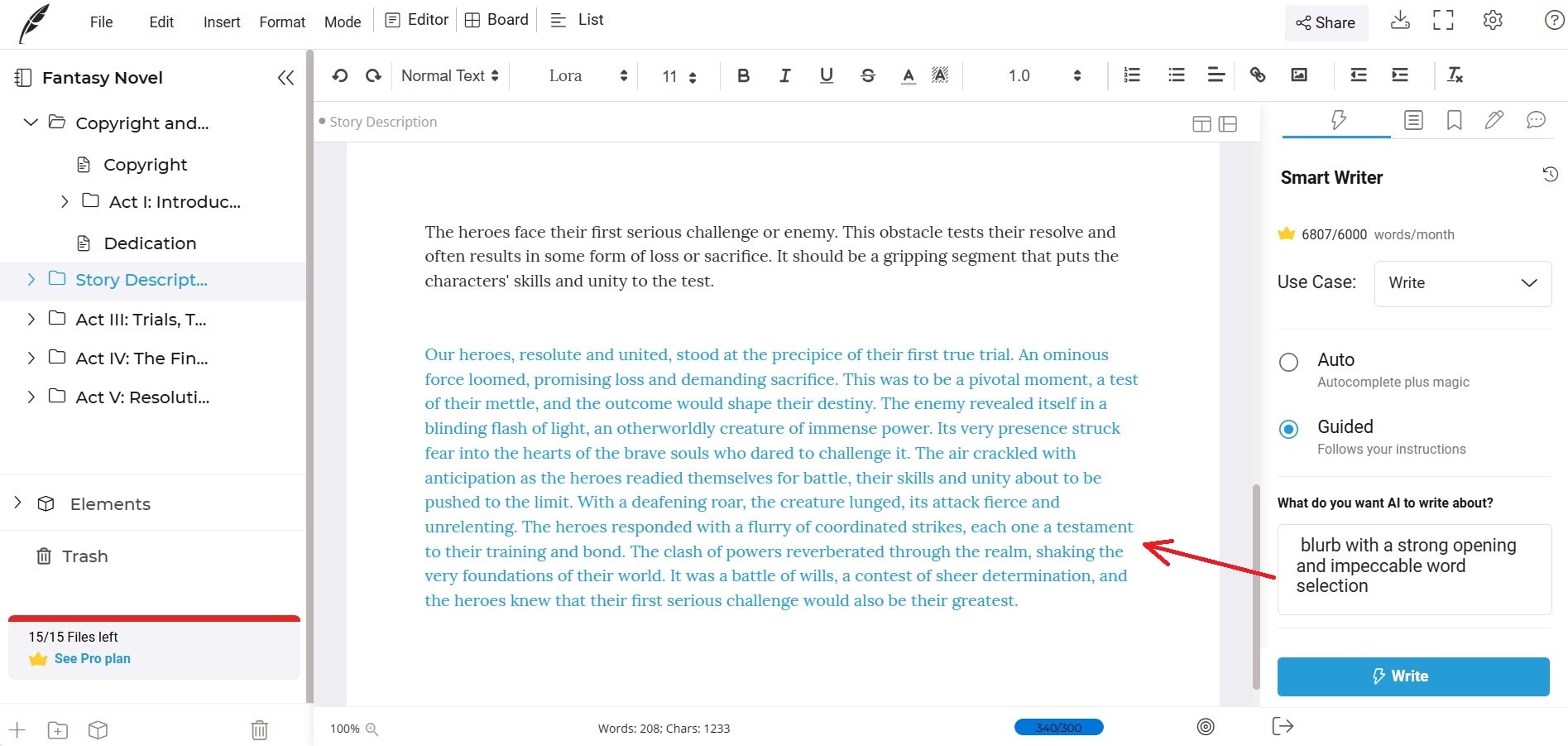
The idea of writing a short description at this stage is to fully understand the idea and story. Make sure you write an intro, middle, conflict resolution, and ending. This description will keep you motivated and will be able to share it with your friends, readers, and colleagues so they know what you are writing about – and what to expect.
Here are a few things to consider when writing your novel’s blurb:
- Keep it simple, short, and concise. Avoid adding too many details even if you have a lot of details to add
- Add a hook (this is a must)
- Write the main selling point of your story that will persuade readers to go ahead and read the novel.
Step #4: Create Compelling Characters
Now let’s create compelling characters, the soul of your novel. You need to develop a complete list of characters. You need to create character profiles for all the characters in your story. Here is what a character profile includes:
- Name
- Age
- Personality and traits
- Appearance
- Any other necessary details.
Check out this character profile guide and template for character development and polishing:
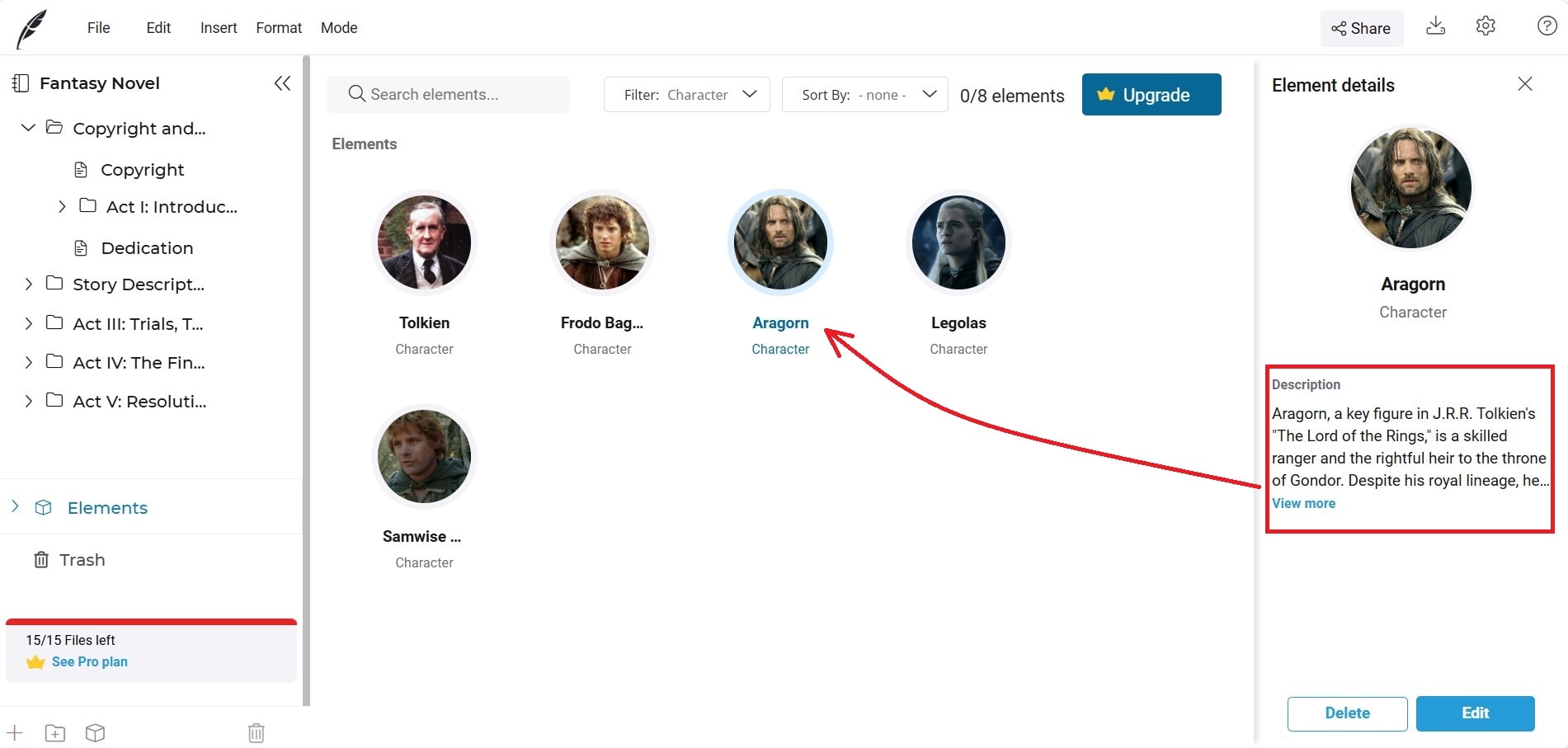
Depending on the novel genre and plot, you might have several characters including:
Protagonists
It is the main character of your novel who drives the story. The protagonist is usually the hero or the heroine of the novel who faces a conflict and looks for a resolution.
Think of Bilbo Baggins in The Hobbits or Harry Potter in the Harry Potter series – they’re the protagonists and the entire novel or series revolves around them.
Antagonists
An antagonist is a villain in your story. He/she competes against your protagonist. You need to come up with the main antagonist in your novel and must develop his/her profile. Antagonists are equally important as they give meaning to your story and keep readers hooked.
Smaug in The Hobbit and Voldemort in Harry Potter are antagonists who oppose the main characters.
Power Players
These are the characters who either positively or negatively impact your novel and have the power to change the plot or add a twist. If you have any power players, define them, and create their profiles.
Mentors
A mentor in a novel is a character who mostly (not always) guides the protagonist and acts as his/her mentor. In some cases, a mentor acts otherwise and opposes your main character.
However, it isn’t necessary to have a mentor in your novel but if you have any, develop their profile too.
Minor Characters
List all the minor characters and develop their character profiles too. These are the characters who act as supporting characters in your story. There could be a lot of minor characters in your novel depending on the plot and it is best to develop their profiles at this stage to avoid hiccups at a later stage.
Step #5: Set the Plot
The events that happen to the characters in your novel develop the plot. You don’t have to necessarily have a full understanding of the plot at this stage as it mostly develops and evolves (in most cases). However, you must have a basic structure of the plot in your mind and you need to write it.
There are several ways to craft a novel plot such as a three-act structure, five-act structure, or Freytag’s Pyramid. Here is how Freytag’s Pyramid works:
In a simpler form, your plot must consist of the following:
- Conflict
- Twist
- Climax via increasing tension
- Resolution of the conflict
- Ending
Here is a simple way to plan your novel’s plot:
- Plan the middle part first as it is easiest. You have to create conflict, tension, twist, climax, and move towards the resolution. There is a lot of scope in the middle part of the novel so it is best to plan its plot first with detailed specifications
- Figure out the ending of the novel. The novel must end with conflict resolution
- Plan the beginning. It is usually hard to write or even plan the beginning. You can skip it for now if you have no idea where and how to begin the novel and how to write a catchy introduction that will keep readers hooked.
You can use a Squibler’s plot generator that comes with 500+ short story ideas that will do all the heavy lifting for you:
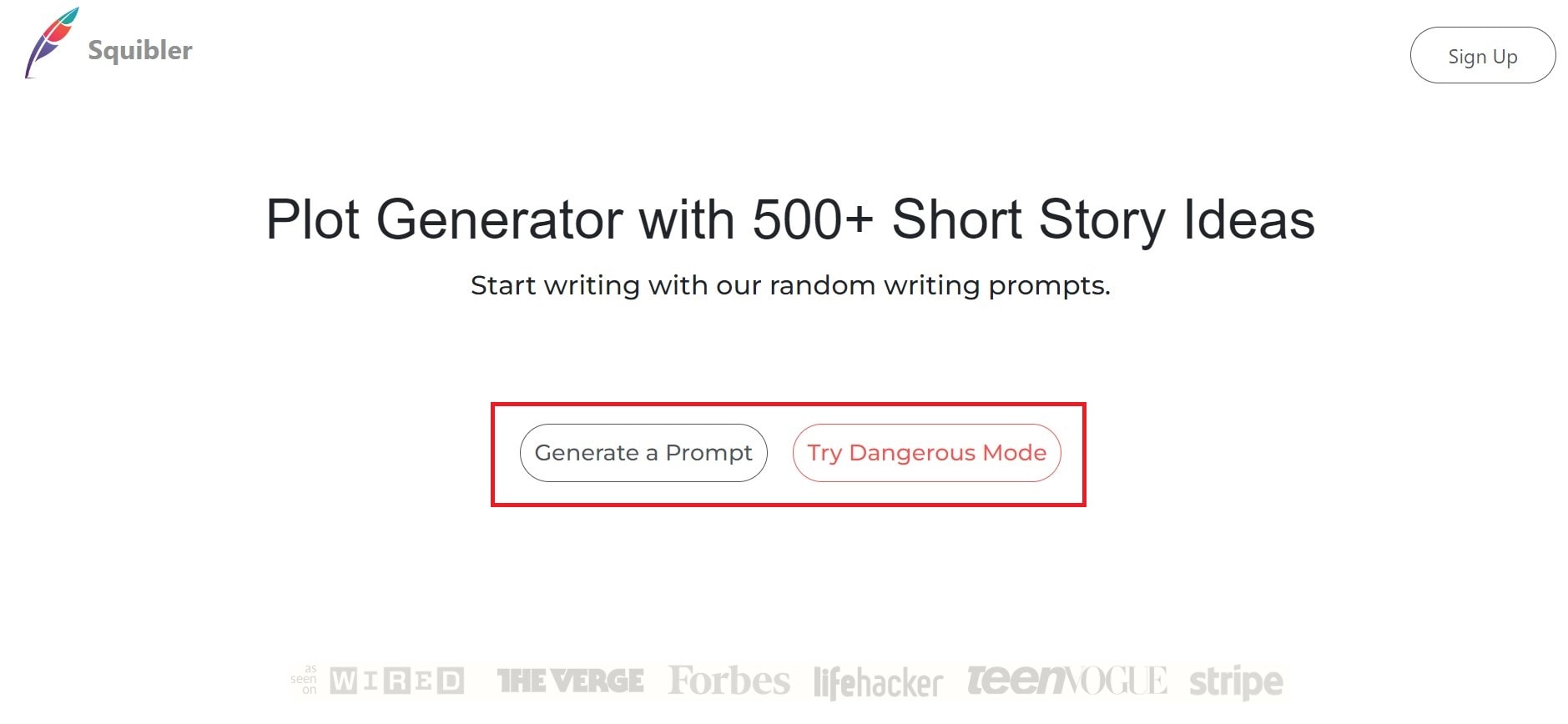
When planning your novel’s plot, you need to decide if it will be a part of a series or a standalone novel. If it is a standalone piece, you need to plot the ending accordingly.
In the case of a series, you need to plot for at least the next novel in the series. This will help you create a connection between the ending of this novel and the opening of the next novel in the series.
Step #6: Define Story Settings
The setting defines the when and where of your novel. Setting planning requires you to identify the place, time, environment, objects, ambiance, etc. where all or most of the events will take place:
The place and time in the novel play a significant role in how it will be perceived by the readers. For example, places help you set the tone and mood of the story. Think of a couple sitting at a shore in the sunset as opposed to a teen standing at the edge of the world’s tallest skyscraper thinking of jumping with the intention of suicide.
These two places develop two opposing tones and moods.
The same is the case with time. It improves readability, and comprehension, and sets the mood and tone of the novel. For example, a person living in 1698 vs. 2018.
Having a clear plan for your novel’s setting is essential. And there is a lot of scope here. You can create a whole new world (called worldbuilding) with your structures, places, climate, environment, maps, and more. The Lord of the Rings, for example, has developed a whole new world.
However, worldbuilding requires a lot of time, hard work, creativity, and research. If you can set your novel in an established world, it’ll work best.
Here are a few writing tips to plan the setting for your novel:
- Figure out the place where the main characters spend the most time.
- Plan for the location, climate, environment, geography, resources, time, and others.
- Plan the farthest place your main character can go.
- Ensure that the setting supports the plot.
Step #7: Choose Voice Tone and Style
Voice is your own and is derived from your personality, mood, character, traits, background, etc. As a writer, your voice separates you from other writers. Style is broader and adaptable. Some writers have a straightforward writing style with simple language, others have a sarcastic writing style, and so on.
As a writer, you have your unique writing style. The way you write the novel brings it to life – your unique writing style. However, style isn’t constant and should not be consistent across novels. You need to tweak your style based on the plot, genre, target readers, and other factors.
For example, the way you write science fiction will be much different than how you write a romantic novel. Point of view (first, second, or third person) is another important variable. The first-person point of view isn’t as flexible while the third-person view gives you a lot of flexibility
Your target audience (readers) also impacts the voice and style. For example, if you are writing a romantic novel targeting teens, you’ll use different language and a soft style as opposed to writing a romance novel for adults.
You need to plan your novel’s voice and style early before you write the first line. You must have a clear understanding of the point of view that you’ll use and your target readers. Define an appropriate writing style accordingly.
Step #8: Brainstorm Background Details
This includes any research brainstorming or backstory that you have in your mind about your plot or characters. Plan and organize all the details and research that you have already done so that:
- You don’t forget it.
- You can easily refer back to it.
Here is an example of how to chart the background details:
Martin Luther is a single father of two who is living in the suburbs of New York City. He has been struggling at his job and had a weird last year both financially and emotionally, her daughter is suffering from a last-stage tumor, and the son, 14, is used to having bad company…
The more details you have, the better.
Step #9: Review the Chapter Outline
By this step, you must have a much clearer idea of the novel as you have planned pretty much everything about it except the chapters. It is time to write chapter headings and descriptions.
Here is how to do it:
- Plan the total number of chapters your novel will have
- Give a name to each chapter
- Plan and write the description of each chapter with all important details such as conflict, climax, twist, etc.
- Decide the point of view for each chapter and important scene in the novel
- Overview chapter outline and see if something is missing
- Check the timeline and ensure that all the scenes, actions, and chapters are chronologically arranged.
Distributing your novel and plot into chapters gives a complete look to the novel and you know what exactly to write in each chapter. Here is an example of a chapter outline with details:
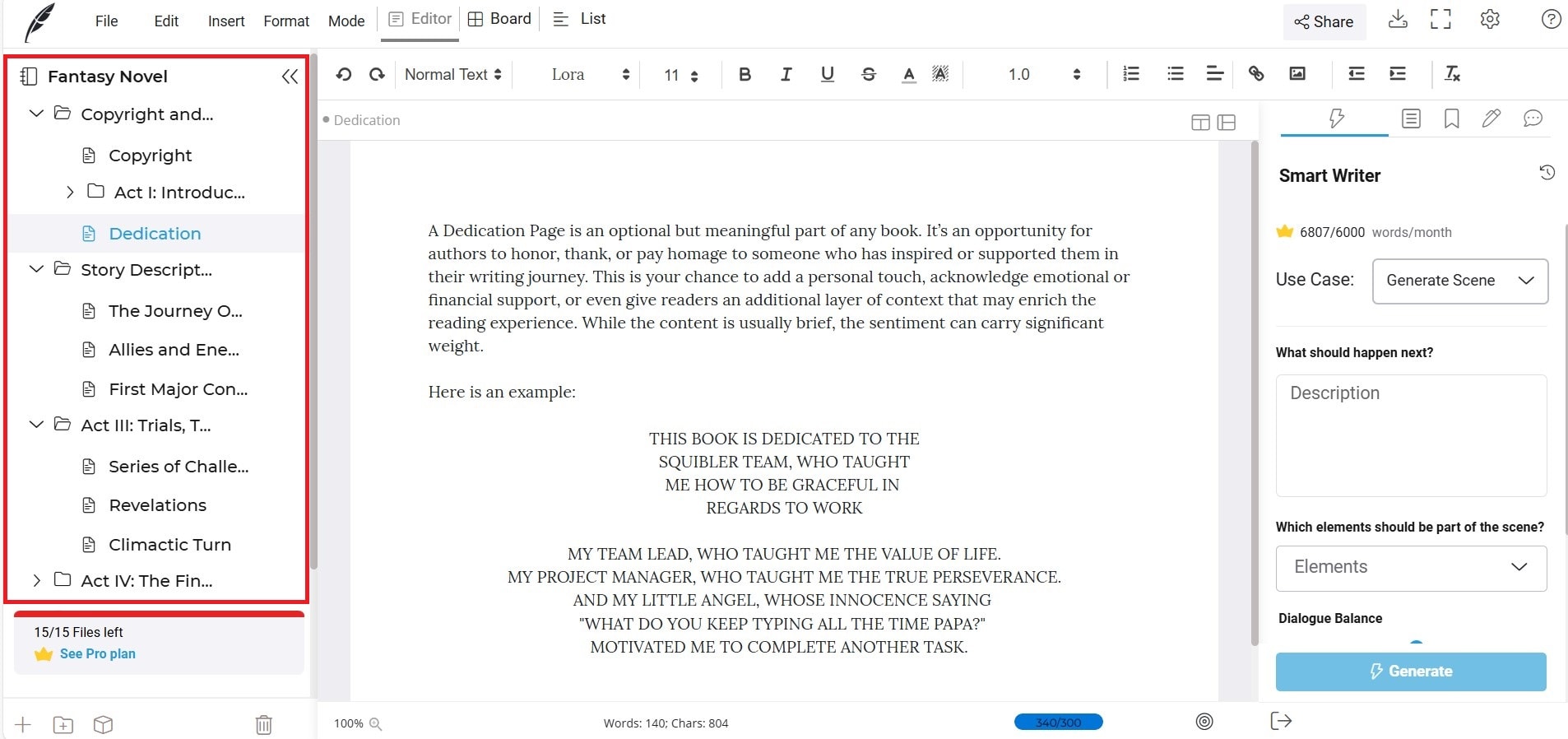
If you don’t have a lot of details about the plot and chapter details, it is the best time to plan it out. At least have a chapter outline for the most important chapters in your novel (e.g. conflict, climax, resolution, ending).
Step #10: Set a Goal for Completion Time
When do you plan to complete this novel? Do you have a turnaround time in mind?
One of the key aspects of planning a novel is to think about how and when you’ll start and finish the novel. Planning a novel isn’t the same as writing a novel. Having a plan doesn’t mean you’ll write and finish it.
To avoid delays, you need to create a detailed and step-by-step action plan on when you’ll finish writing it. Create a Gantt chart by allocating each section of the novel a specific completion time:
Check out these Gantt chart templates to get started.
Step #11: Start Writing
Finally, you are all set to start writing your novel.
Again, planning doesn’t mean you’ll start writing your novel and finish it. The number one reason why novelists don’t finish their novels is that they don’t have a plan. You are lucky if you have a plan and you know how to plan a novel.
What’s important is that you start writing your novel.
The best way to start with the writing process is to use a novel writing software. It will help you keep organized, you’ll be able to set writing goals, and you’ll be able to track your progress.
Start Writing your First Draft Now
Now that the importance of planning your novel is clear, start writing your first draft now. Of course, you have the option to go without it but if you are writing a novel for the first time, we recommend having a plan. It will give you a sense of accomplishment and motivate you to start writing.
The 11-step guide on how to plan a novel is all you need to plan any novel in any genre. It is all about filling in the blanks and you’ll have the plan ready in no time. It will help you a lot in your writing career.
The best thing about planning a novel is that you can always go back and edit anything anytime per need. There aren’t any hard and fast rules.
Let’s brainstorm your next novel and start planning it.
FAQs
Here are some commonly asked questions about planning a novel:
How do you start planning a novel?
To start planning a novel, begin with a basic idea or rough idea, and use writing prompts to spark your creativity. Determine the genre, such as historical fiction, and outline the main plot points. Develop your characters and setting to build a solid foundation. Embrace the writing journey by focusing on creating your first draft, allowing your story to evolve as you go.
How to write a novel step by step?
To write your first novel, start with rough ideas and outline the main plot. Create vivid characters that drive the story. Begin writing a few pages each day to build momentum. If you’re writing crime fiction, focus on developing a compelling key scene that hooks readers. Gradually expand your narrative, ensuring each chapter builds on the last until your story is complete.
How do I start my first novel?
To start your first novel, begin with a clear idea for your story and main characters. Outline the plot to provide direction and structure for your fiction writing. Set a writing schedule to maintain consistency, and write a little each day to build momentum. Embrace the process and allow yourself to explore and refine your story as you go.
How do you plan a novel in a notebook?
To plan a novel in a notebook, start by jotting down your main idea and key plot points. Create sections for character profiles, setting descriptions, and chapter outlines. Use bullet points and mind maps to organize your thoughts and structure the narrative. Regularly update your notebook with new initial ideas and revisions as your story develops.

